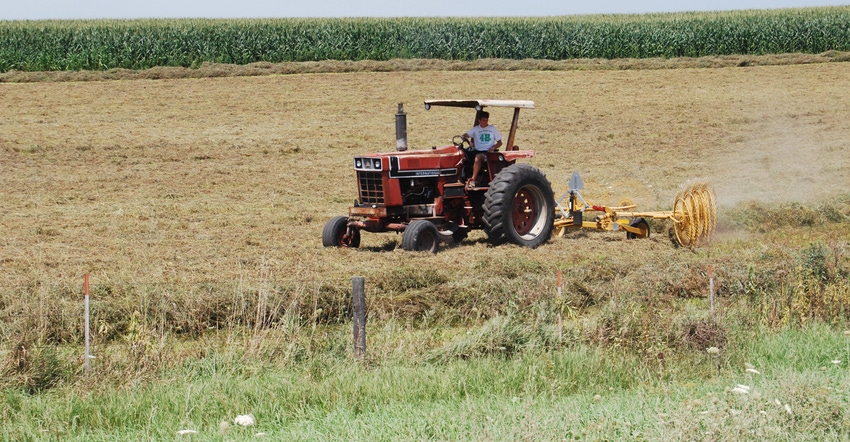July 30, 2020

COVID-19 has changed a lot for Iowa families. Near the top of that list of changes is the amount of time many children are spending at home. And for many farm families, this has meant an increased amount of time children have been spending helping with chores around the farm.
For many children, it has been an opportunity to learn more about the farming operation and to play a bigger role in the daily tasks required to keep the farm operational. But more time spent near equipment or animals also means an increase in the risk of a farm-related injury occurring.
“Every year in Iowa, farm-related injuries claim young lives or leave youth with lifelong disabilities,” says Charles Schwab, Iowa State University Extension safety specialist. Farm injuries involving children may seem unpredictable, stealing young lives at random, in situations that could not have been avoided. However, most farm injuries can be prevented as most occur when a child is doing something that is beyond their mental, physical or emotional ability.”
Matching chores to ability
Understanding the capacity of children and matching specific chores or activities to their ability is key to keeping them safe on the farm. If more time at home means more or different chores, make sure they are age appropriate, Schwab says.
Children 5 years and younger should be supervised closely, and physical barriers such as locks and fences should be used to keep them from dangerous areas or activities. Specific areas where children can play with minimal supervision while also being separated from farm work can help protect them from injury.
“In these play areas, try to provide appropriate play items such as swings, a sandbox or playhouse to make the play area appealing,” he says. “If the farmstead is more enticing than the designated play area, your efforts may not be effective.”
As children grow, consistent rules and behavioral expectations should be in place, while giving them more responsibility that can be completed under supervision. Children in their early school years (ages 5 to 9) can be given simple chores, while older schoolchildren (ages 10 to 13) can start being exposed to more complex tasks while still under direct supervision.
To understand what tasks are appropriate for different ages of children, visit the National Children’s Center for Rural and Agricultural Health and Safety at
cultivatesafety.org.
Take time to teach about safety
Helping children understand how powerful farm equipment is and how quickly they could be entangled can also help keep them safe. No matter how fast someone’s reaction time is, it will never be fast enough to avoid injury from farm equipment. Even one of the slowest entanglement hazards on the farm, the PTO, can pull about 7 feet every second. Even the fastest of reaction times, responding to a stimulus in three-fourths to one second, would result in serious injury to someone entangled in a PTO.
“The belief that a human can react fast enough to avoid potential injury is one of the greatest misconceptions on the farm,” Schwab says. “Relying on your ability to react quickly to a situation is never the route to safety.”
Information about farm safety can be found through the ISU Extension’s Safe Farm Program at safe.ae.iastate.edu. Farm safety publications also are at the ISU Extension Store.
Wall is a communications specialist for Iowa State University.
You May Also Like




